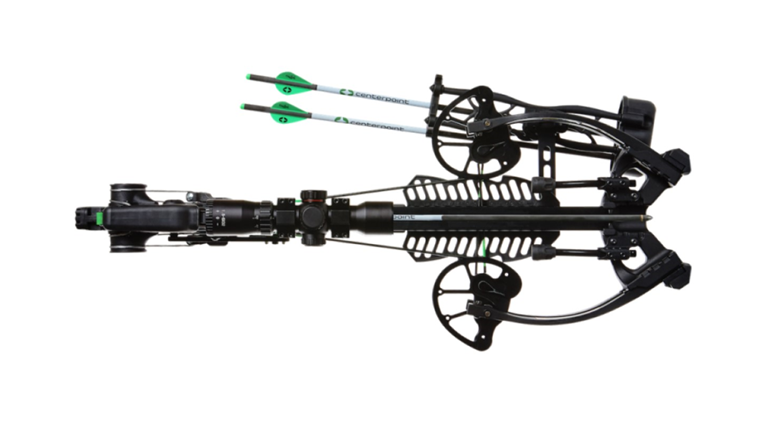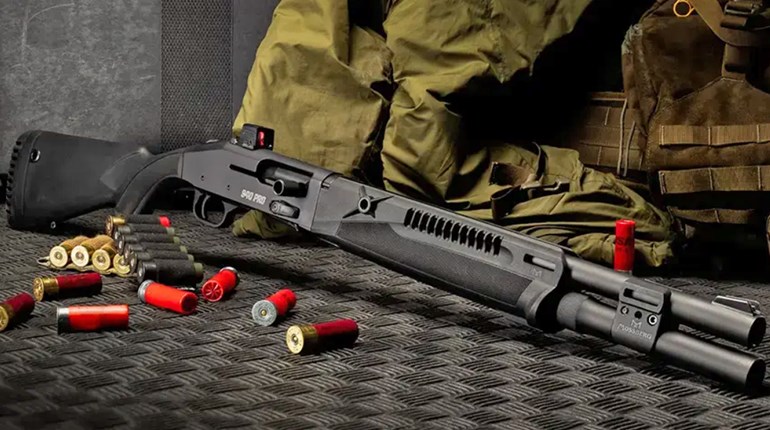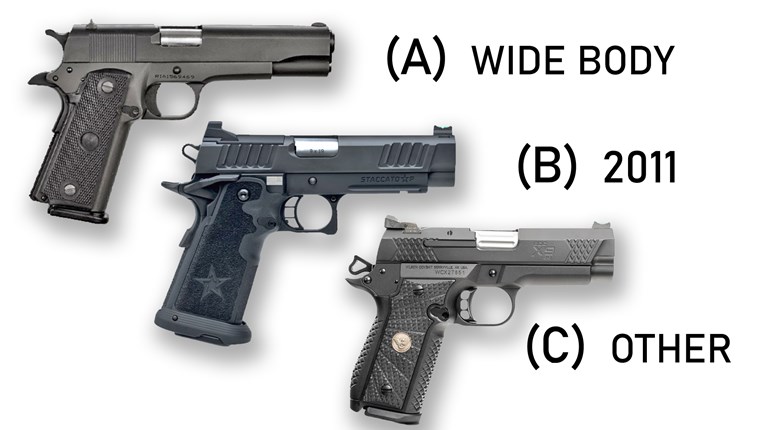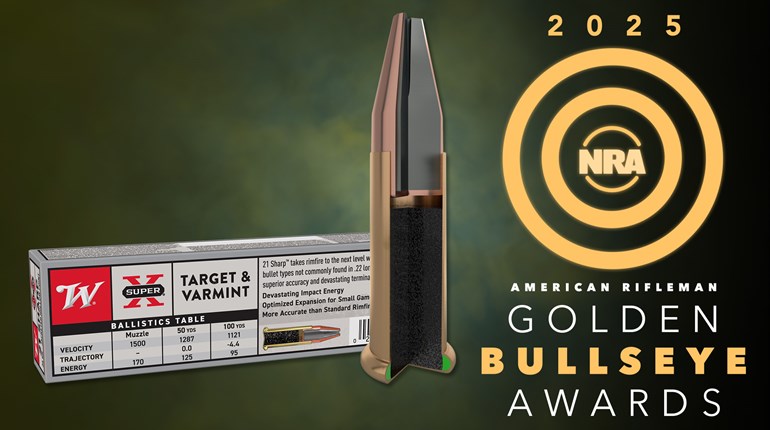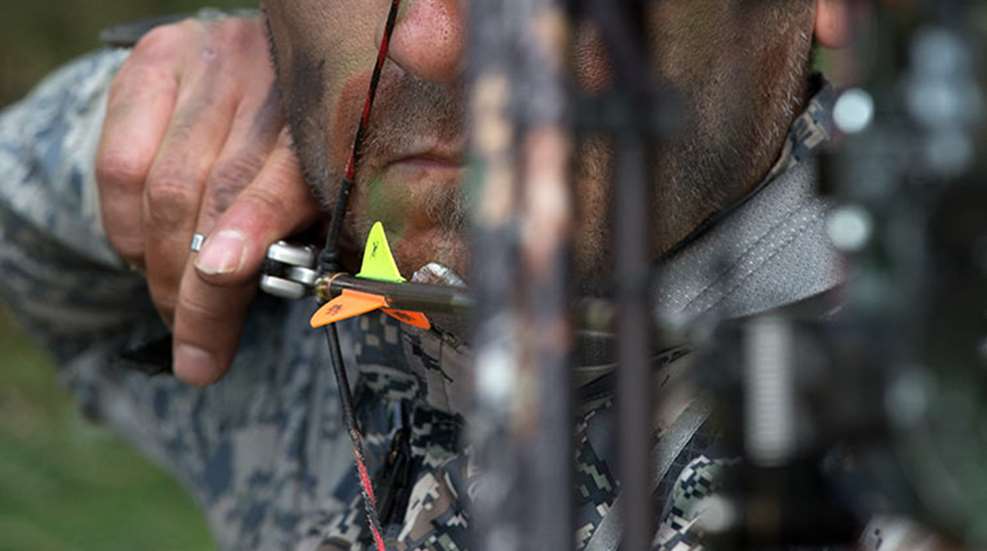
For the last 20 years, trigger-finger, wrist-strap release aids for compound bows have dominated bowhunting. While there are dozens of iterations, the basic design attaches to the bow string or a D-loop via a hook, caliper or rope, and mechanically releases the string by a gun-like pull of its trigger. The wrist strap allows the shooter to draw and hold the string without concentrating the required force on the fingers alone. These release aids take little time to learn, are much more consistent than traditional finger-style shooting and usually make bowhunters more accurate. However, they have one major drawback: They can facilitate the development of bad form that may eventually lead to diminished accuracy.
Most professional target shooters use back-tension release aids because they promote perfect shooting form and therefore can be more consistent. Rather than releasing the bow string by simply pulling a trigger, the archer must correctly pinch his shoulder blades together—a process that creates back tension due to the contraction of the muscles in the back. The contractions increase the distance between the hands at full draw, thereby causing the shooter to push with the bow hand and pull with the release hand. The push/pull motion alters the angle of the release’s hook until the string slips off it.
The advantage of a back-tension release aid is that the exact moment of the shot comes as a surprise to the shooter so he’s not as likely to anticipate it and punch the trigger—something archers often call “target panic.” Trouble is, this surprise factor is also the reason back-tension releases are not recommended for hunting; hunters must closely control when the shot will break because game does not always stand still like 3-D targets. Also, these releases can be easily dropped or lost while hunting, since they typically do not have a wrist strap.
The newest evolutions of release aids are hybrids that morph back-tension and trigger-finger styles. Scott Archery’s Longhorn Hex, for example, features a wrist strap connected to a T-handle with an articulated hook-and-hinge mechanism in the middle. The hook pivots to release the string when its angle is changed via back tension. It features a clicking noise to alert the shooter when the string is about to be released and so the timing of the shot can be controlled. When used as designed it promotes proper shooting form and can mitigate target panic.
After experimenting with the Hex, however, I found the clicking sound actually induced a bit of target panic within me by increasing my anticipation of the shot. Fortunately, the clicking feature can be removed. Also, it’s very easy for inexperienced shooters to errantly pull its T-handle like an elongated trigger rather than by using back tension. Like all release aids, the Hex requires practice to develop proper, consistent form when using it. Achieve this, and you’ll have a great hybrid release for hunting and target shooting.
Another new hybrid release comes from No Limit Archery. The Magnetiks Multi-Digit Trigger Release is similar to a trigger-finger aid, but I found that it helped tame my target panic. It’s a wrist-strap design with a hook-style mechanical head that features a trigger on one side, actuated by the middle and ring fingers, and a grooved extension for the index finger on the other. After using its wrist strap to bear the burden of the draw, place your index finger on the extension and your middle and ring fingers on the trigger. As you exert back tension, pressure transfers from the index finger to the middle and ring fingers on the trigger, and the bow string is released at a micro-surprise. I found it incredibly comfortable and accurate. The Magnetiks is named for its adjustable magnet system used to control trigger tension; it produces no creep and breaks cleanly with a 1-pound pull weight. It’s become my go-to hunting release, for now at least.
If your current release aid works for you, don’t change it. But if you have developed bad habits or target panic, a new style of release might do you good. There are myriad styles and brands available with slight differences that appeal to various shooters. Go to your local archery shop to find one that fits your style, body and budget then shoot it to see if it suits you. It’s worth the effort (and expense) because a perfect shot starts with a perfect release.
Mind Matters
Once you learn the basics, accurate shooting boils down to mental discipline. If you can master your mind, you’ll master the release of your arrow—no matter what style of aid you use. Here are two tips to help you establish such discipline.
Shoot Blank Bales: It’s very difficult to develop perfect release form when the eyes and mind are focusing intently on the bullseye. So to isolate the act of releasing the bow string, practice a drill called “blank-bale shooting.” Stand 5 yards from hay bales or another large backstop, draw, aim the bow just enough so it will hit your backstop, and then close your eyes. Concentrate only on executing the perfect release, whether it be of the back-tension or trigger-finger variety, and follow-through. This drill will teach you what a perfect release should feel like so it can be committed to memory without the anxiety often induced by the presence of a bullseye.
Shorten the Release: Even for trigger-finger release-aid shooters, the actual release of the bow string should come as a controlled micro-surprise—not an abrupt punch. A good way to accomplish this is to shorten the length of the release aid so that after drawing, the second or third pad of your trigger finger—not the fingertip—lays over the trigger. Release the bow string with a slight push/pull motion created by back tension, and perhaps a light squeeze of the fist rather than a deliberate pull with the fingertip. This technique has proven to be extremely accurate for many hunters.














